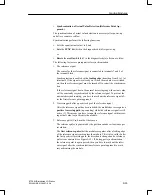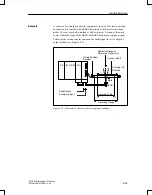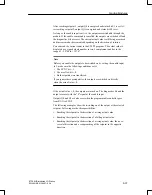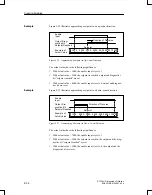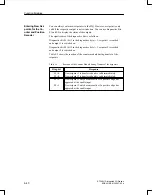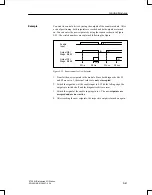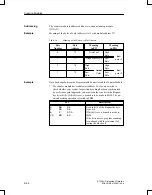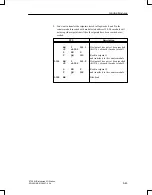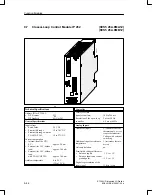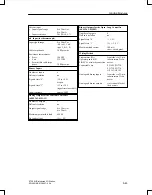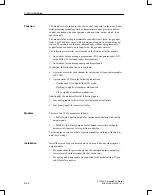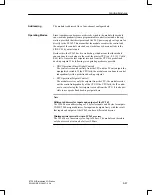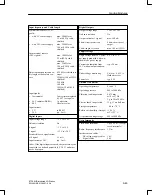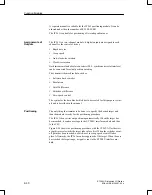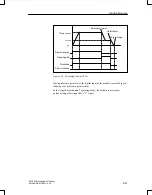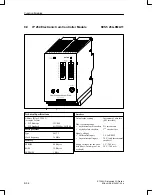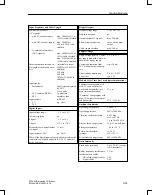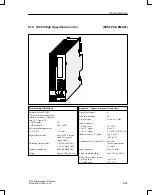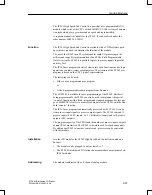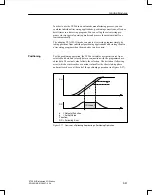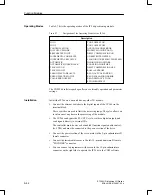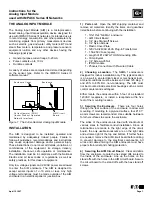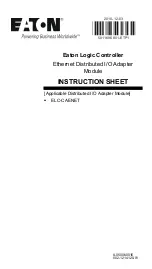
9-47
ET 200U Distributed I/O Station
EWA 4NEB 812 6087–02b
The module is addressed like a four–channel analog module.
Since transducers and sensors are directly wired to the module, the module
can work independently from a programmable controller in stand–alone op-
eration, provided that the setpoints and the 24 V power supply voltage are fed
directly to the IP 262. This means that the module executes the control and
the output of the control value and can work alone or be controlled via the
SINEC L1 by a master unit.
Besides this, the IP 262 has its own backup, which means that the module
can continue to work alone in the event the master CPU (e.g., S5–135U with
R64) fails. It uses the last setpoint received from the CPU or a predefined
back–up setpoint. The following two operating modes are possible:
DDC Operation (Direct Digital Control)
The control is executed entirely from the CPU and the IP only outputs the
manipulated variable. If the CPU fails, the module can continue to control
independently with a predefined back–up setpoint.
SPC Operation (Setpoint Control)
The module receives only the setpoint from the CPU; the module carries
out the control independently of the CPU. If the CPU fails, the IP contin-
ues to control using the last setpoint received from the CPU. It is also pos-
sible to use a predefined back–up setpoint here.
Note
Different addresses for inputs and outputs of the IP 262
The IP 262 has an address range of 8 bytes for inputs and 8 bytes for outputs.
COM ET 200 assigns addresses for inputs and outputs freely with the result
that inputs and outputs of the IP 262 can have different addresses.
Minimum time interval between IP 262 accesses
The IP 262 has a firmware cycle of up to 200 ms. The module can therefore
only be accessed at intervals of at least 200 ms.
Addressing
Operating Modes
Function Modules

